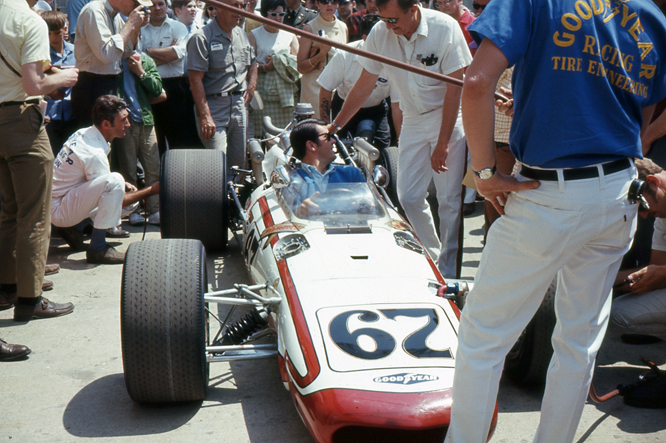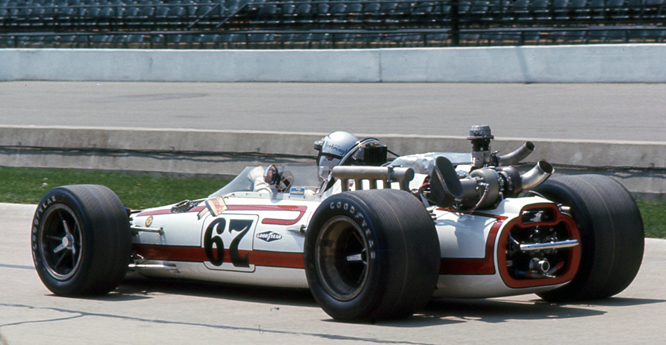Despite the loss of it’s sponsor Johnson’s Wax, the number of events being cut back to eight, down from eleven in 1970 and the number of entrants falling to an all time low, just 15 at Edmonton, the 1973 Can Am Challenge was still a huge draw for spectators who wanted to see the worlds hitherto most powerful racing cars competing on road courses. According to contemporary reports attendances at all of the races in the 1973 Can Am Challenge were up.
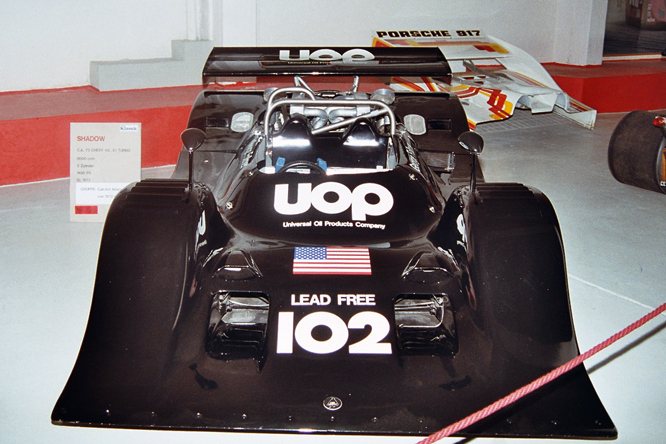
Only two teams prepared new cars for the 1973 one of them was Shadow who built two DN2’s designed by Tony Southgate, one of those cars ran a regular 730 hp 8.1 litre / 494 cui Chevrolet V8, while the second car, featured today ran with a turbocharged version of the motor.
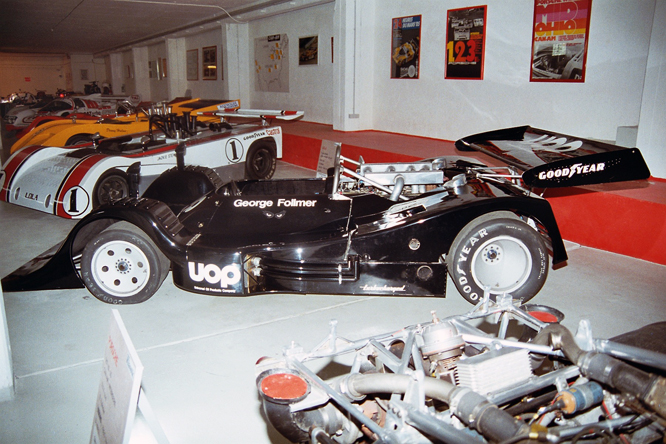
Both DN2’s were completed too late to undergo any testing prior to the start of the season and so presented little challenge to the teutonically prepared Porsche 917/30 driven by Mark Donohue for the Penske team. Jackie Oliver retired the normally aspirated DN2-1A from the opening two rounds of the 1973 Can Am Challenge run at Mosport and Road Atlanta with gearbox and suspension failures respectively.
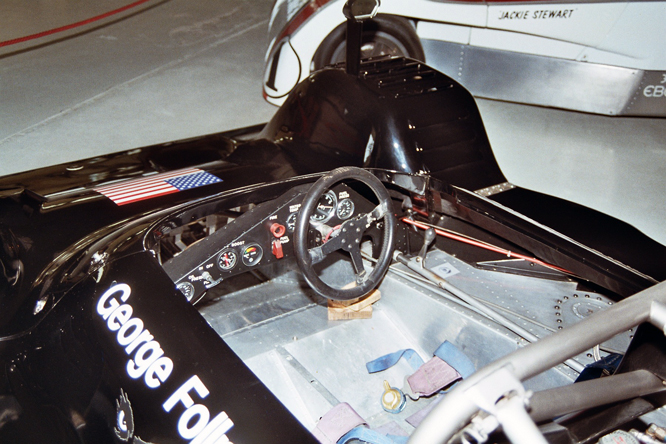
Shadow team owner Don Nichols was entered to debut today’s featured car, seen at the Rosso Bianco Collection by Frank ‘Duc-man’ Christmann in Germany several years ago, at Watkins Glen in July 1973 but the car did not show. When #DN2-2A did show up at the next round at Mid-Ohio it was kept as a spare. Jackie Oliver scored a 3rd in the final at Mid Ohio which translated to a final 8th place overall having finished 12th in the heat.
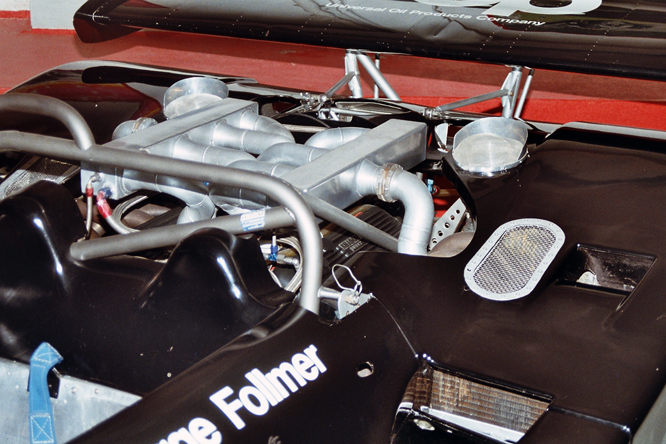
James Hunt took over the normally aspirated DN2 at Road America while Jackie Oliver tried the turbocharged DN2-2A, they qualified 14th and 21st respectively. James did not start thanks to recalcitrant fuel metering unit while Jackie who had not set a time in qualifying lasted just 3 laps before the 1200 hp motor failed.
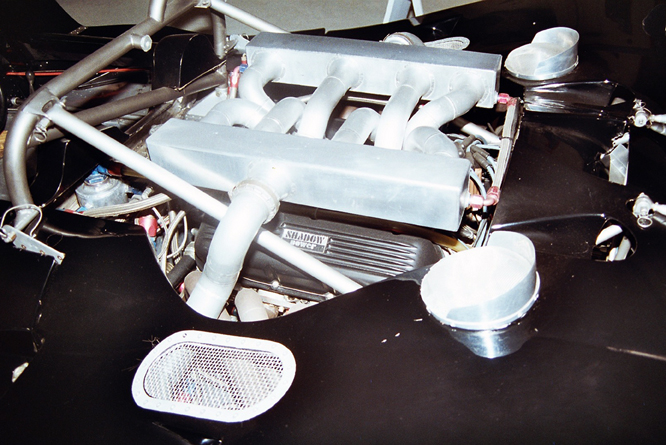
At Edmonton the Shadow team ran just DN2-1A and Jackie recorded a third place finish from seventh on the grid, driving the same car at Laguna Seca Jackie went one better finishing second from 5th on the grid, while Vic Elford tried the turbo charged DN2-2A which he qualified 18th but retired with brake failure after completing 22 of the 66 scheduled laps.
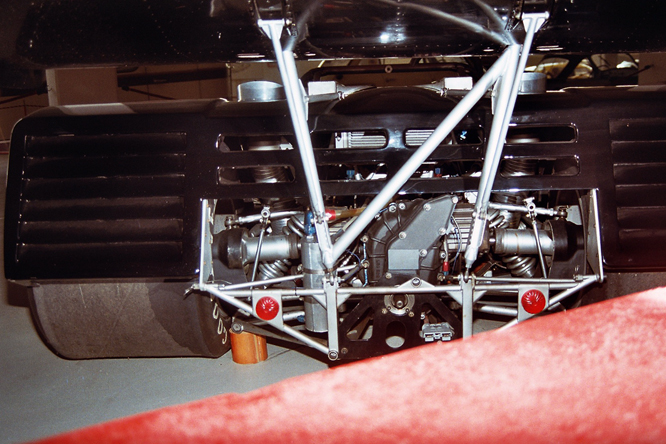
At the season ending race run at Riverside Jackie qualified 9th in DN2-1A, while Vic was 14th on the grid, however neither car lasted more than a handful of laps, Jackie retired with bodywork damage on lap three while Vic retired with a broken throttle linkage after the opening lap.
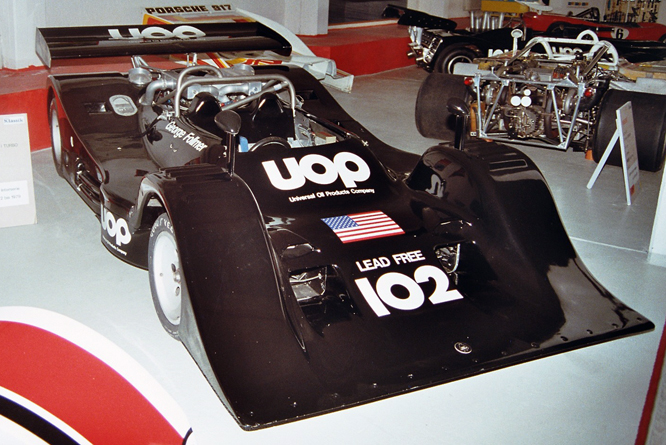
The Shadow DN2’s, which bear a passing resemblance to the 1972 Lola T310, were not seen again in period. It should be noted George Follmer never raced a Shadow DN2 although he did join the Shadow team for the Can Am Challenge in 1974, it remains a mystery as to why George’s name should appear on the side of the car.
I hope you will join me in thanking Frank “Duc-man” Christmann for sharing today’s photographs.
Thanks for joining me on this “Twelve Hundred Horsepower” edition of “Gettin’ a li’l psycho on tyres” I hope you will join me again tomorrow when I shall be visiting Quail Councours d’Elegance for Ferrari Friday. Don’t forget to come back now !


